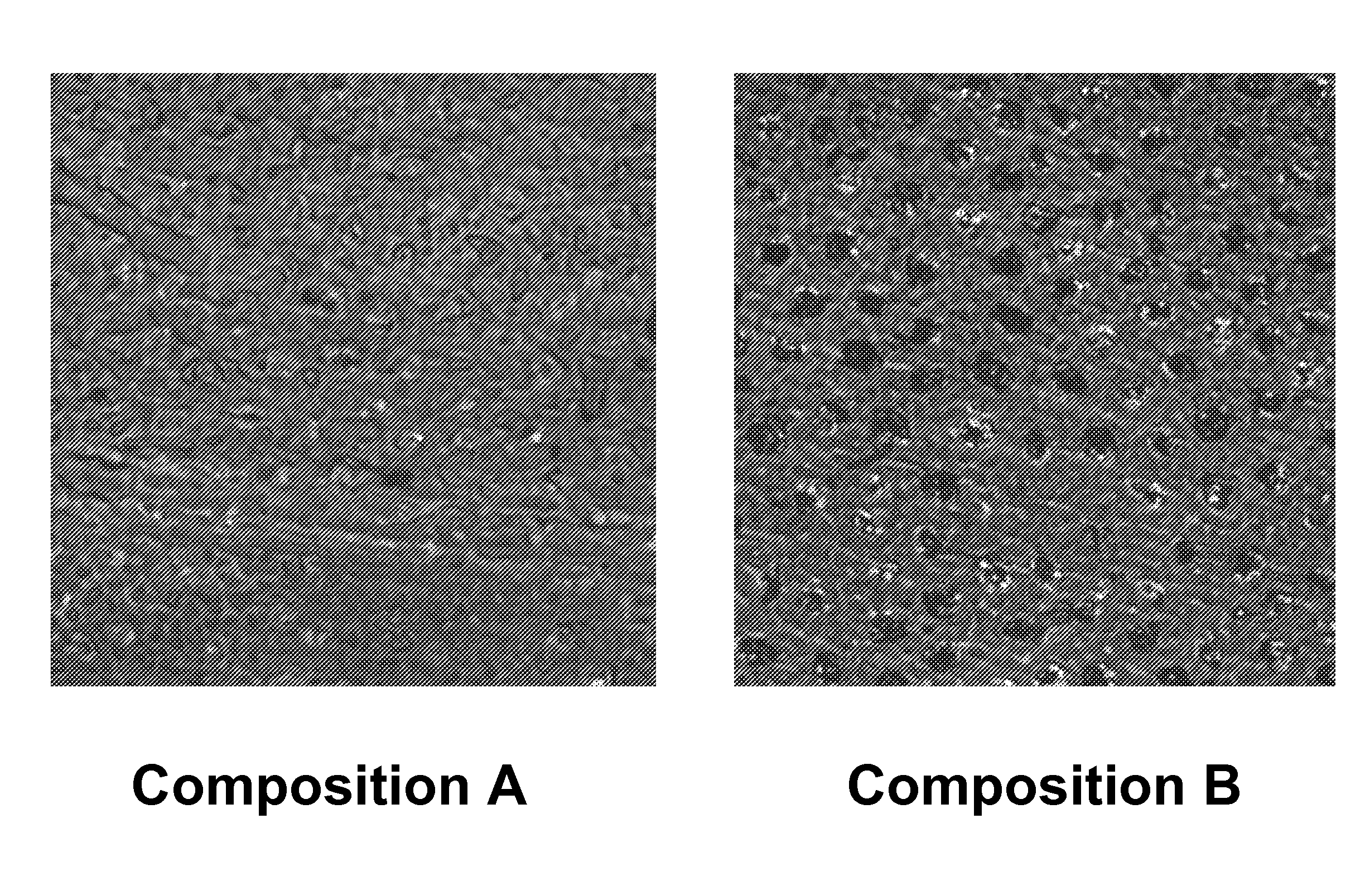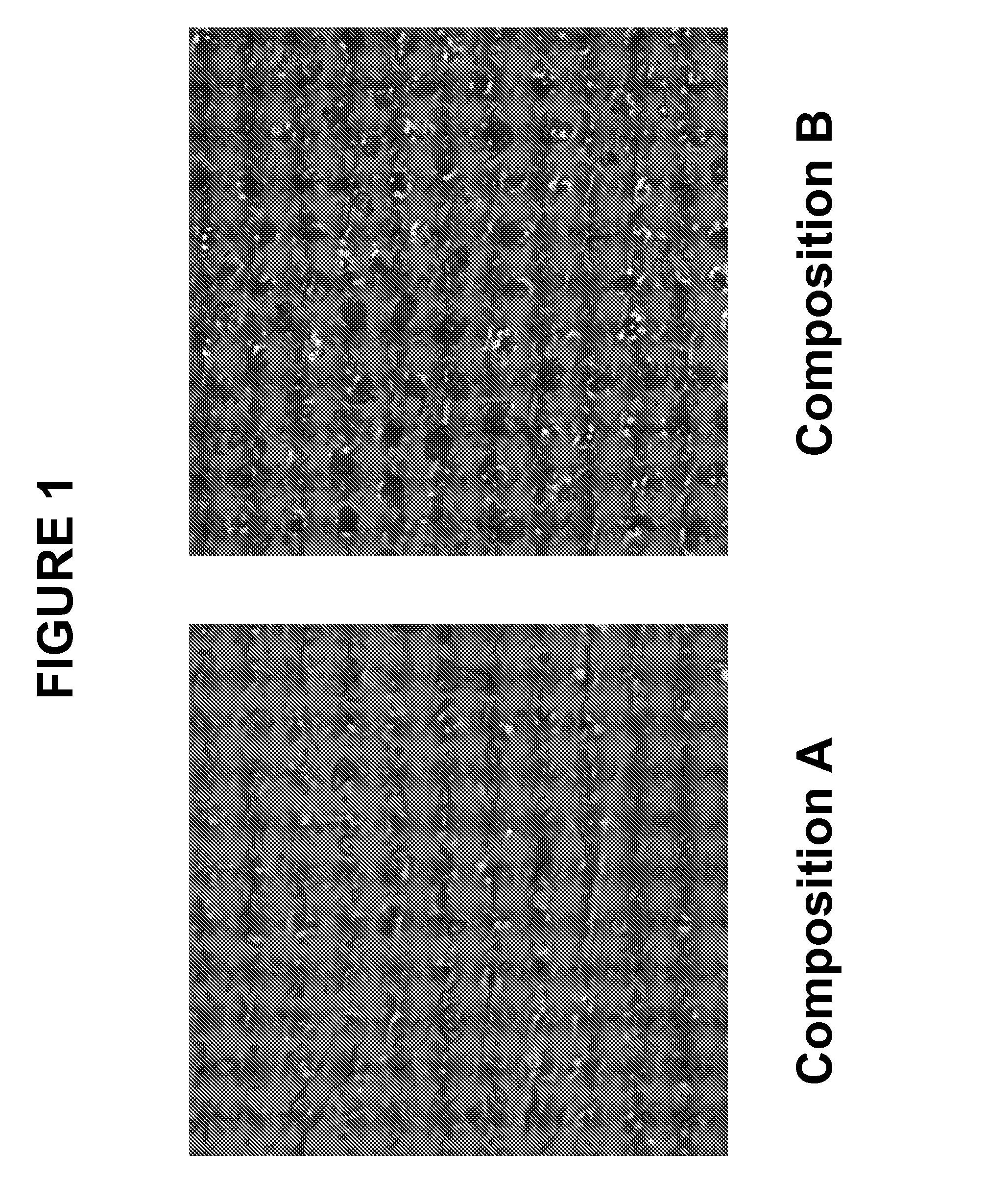Oral care composition to reduce or eliminate dental sensitivity
a dental sensitivity and composition technology, applied in the field of oral care composition to reduce or eliminate dental sensitivity, can solve the problems of tooth sensitivity, tooth nerve damage, excessive tooth sensitivity, etc., and achieve the effect of reducing tooth sensitivity and/or eliminating the perception
- Summary
- Abstract
- Description
- Claims
- Application Information
AI Technical Summary
Benefits of technology
Problems solved by technology
Method used
Image
Examples
example 1
[0027]Two compositions paste-form was prepared using the materials and amounts set out in Table I and the process described below. Composition A represents a composition within the scope of the invention and composition B is a control composition that does not contain the specified silica particle.
TABLE IABWater15.60715.607Saccharin0.30.3NaF0.2430.243Glycerin2020Propylene Glycol0.50.5Carboxy methyl cellulose (CMC)1.11.1Iota Carrageenan0.40.4TiO20.50.5Sorbitol20.8520.85PMV / MA Copolymer1515NaOH1.21.2Abrasive silicas1520Ineos AC435—Flavor11triclosan0.30.3Sodium laureth sulfate1.51.5Total100100
[0028]Sodium saccharin and sodium fluoride was dissolved in water. Triclosan was dissolved in flavor.
[0029]Glycerin and propylene glycol were mixed together. Sodium CMC and iota carragenan was dispersed. Titanium dioxide was added to the mixture. This was followed by the addition of sorbitol. To this sodium saccharin and sodium fluoride in water was added and it was mixed for 15 minutes at 49° C. ...
PUM
| Property | Measurement | Unit |
|---|---|---|
| particle size | aaaaa | aaaaa |
| particle size | aaaaa | aaaaa |
| particle size | aaaaa | aaaaa |
Abstract
Description
Claims
Application Information
 Login to View More
Login to View More - R&D
- Intellectual Property
- Life Sciences
- Materials
- Tech Scout
- Unparalleled Data Quality
- Higher Quality Content
- 60% Fewer Hallucinations
Browse by: Latest US Patents, China's latest patents, Technical Efficacy Thesaurus, Application Domain, Technology Topic, Popular Technical Reports.
© 2025 PatSnap. All rights reserved.Legal|Privacy policy|Modern Slavery Act Transparency Statement|Sitemap|About US| Contact US: help@patsnap.com


